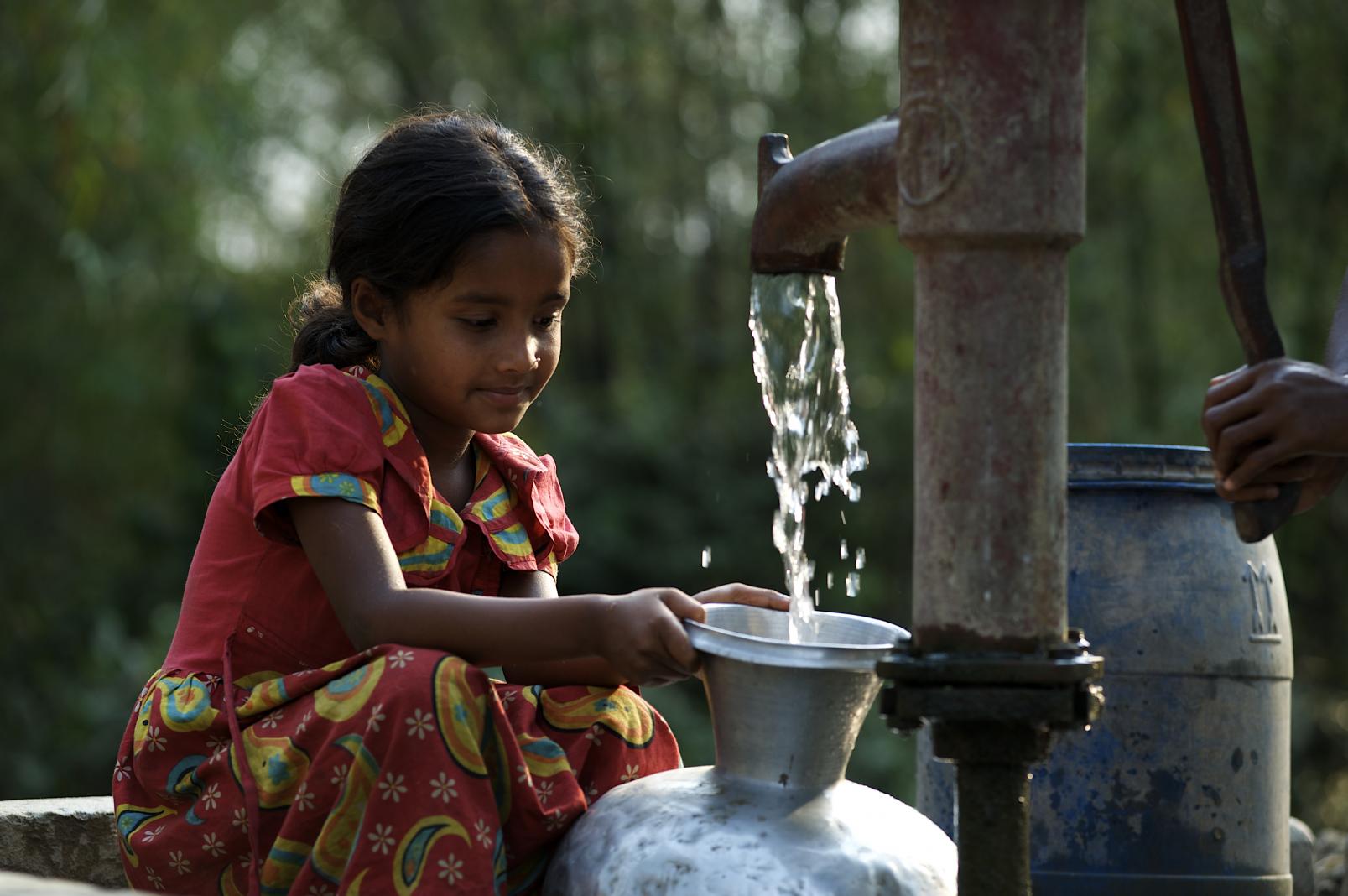Potential drinking water options for Bangladesh salinity impacted areas and its safety aspects

People in Bangladesh coastal areas faces extreme drinking water challenges because of higher water salinity levels. The global sea levels rise due to climate change brings seawater closer to freshwater sources. Both the shallow and deep aquifer system is contaminating by saline intrusion in coastal Bangladesh. Also, the changing climate has increased temperatures over the years which made uneven rainfall and higher evaporation and ultimately making pre-monsoon season water scarcity. Ensuring safe drinking water for the people of salinity impacted coastal area is a matter of great challenge now. Installation of suitable water supply facilities in both household and community can ensure year round water supply through regular maintenance.
Available Drinking water options
Coastal areas are dependent on some of the limited water purification technologies. Different types of drinking water options are available here. Some of those are-
- Rain Water Harvesting
- Purifying pond water (Pond sand filters)
- Pond water
- Hand Tubewell water
- Deep Tubewell
- Piped Water Supply
- Water Treatment Plant ( Reverse Osmosis, Desalination Plant)
Photo source: Caritas, Khulna
Suitable drinking water options
- Rain Water Harvesting
- Pond Water Filters
- Deep Tubewell Water
**Suitable drinking water options depends on the local situation, If suitable aquifer is available then tube-well technology should be the first priority. Otherwise, surface water treatment or rain water harvesting or treatment technologies can be utilised.
Rain Water Harvesting (RWH)
- Rain Water Harvesting (RWH) system is one of most suitable option at household and community-level.
- RWH is best solution for drinking water where safe water scarcity is high, groundwater are unsuitable and surface waters are polluted.
- The usefulness of a RWH system largely depends on how the system is maintaining. Cleaning of tank, gutter system and catchments and water quality monitoring during lean period are needed.
RWH Safety aspects
- Rainwater harvesting is a relatively low cost, clean and free source of water.
- To ensure safe drinking water cleaning of roof, catchment, gutter and pipes at regular interval and cleaning of rainwater reservoir tank and the water filter at least twice a year is needed.
- The first runoff from the roof should be avoided.
Pond Sand Filters (PSF)
- Pond Sand Filter (PSF) is good option for community water supply if suitable pond is available.
- PSF is a simple and low-cost technology with high competence in bacterial removal constructed with locally available materials for domestic water supply.
- This surface water based supply system is the construction of community type Slow Sand Filter (SSF).
PSF safety aspects
- To ensure safe drinking water all types of washing/cleaning and aquaculture activities should be prohibited. Fencing should be maintained throughout the year.
- Regular maintenance like washing of the filter media is important for effectiveness of PSF.
Deep Tubewell Water
- Deep tube-well is the most preferable option if suitable aquifer is available. But low saline groundwater is insufficient in most of the coastal areas.
Women collecting water from a deep tube well in Chapainawabganj, Bangladesh.
Photo source: Relief Web
DTW safety aspects
- The operation and maintenance of deep tubewell is simple, user-friendly by the households.
- The Deep tube well water is bacteriologically safe for drinking and there is no adverse health effect.
- Deep tube well water also contains mineral items within acceptable range, which reduces mineral deficiency of the health.
Conclusion
- Due to extreme level of salinity and long-term sustainable solution lackings, the coastal people are suffering from safe water.
- A combination of household and community-based options can be best or ensuring water supply throughout the year.
- Community-based water supply options need regular maintenance and at the same time awareness and active participation of community people for ensuring proper maintenance of the facilities.
References
- Synthesis Report: Climate resilient drinking water infrastructure based on a demand- supply and gap analysis for 39 Unions of 5 Upazilas under Khulna and Satkhira District. WaterAid Bangladesh, 2017.
- Drinking Water Assessment Report: Climate resilient drinking water solutions for Khulna and Satkhira. WaterAid Bangladesh, 2017
- Jubayer A, 2017, ‘Evaluation of Drinking Water Technologies Used in South-Western Coastal Bangladesh: A Case Study’, BUET.
Also read-
- Messi took his friends on his plane
- The beauty secret of top Bollywood heroines and its herbal care!!!
- Best Makeup Natural Remover (Useful for flawless skin)
- Must things to do to keep a good eye
- Which food for the baby is best and in which month !
- Trump is at high risk of Corona complications
- Best Urology Specialist Doctors in Dhaka, Bangladesh
- Ranbir Kapoor, Deepika Padukone, Alia Bhatt together in one film
- Must things to do to lose weight! Risks of overweight during Covid-19!
- Shah Rukh Khan has cooked for his family in the lockdown! Gauri revealed the secret.



